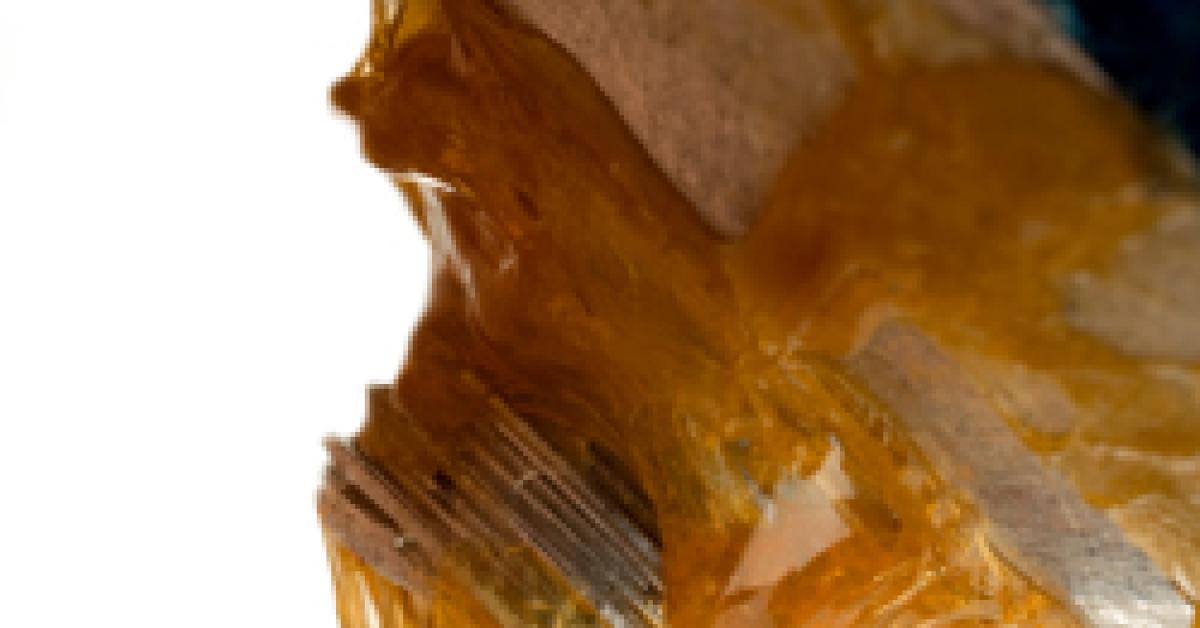CHICAGO — A reader recently wrote to ask for guidance in removing Super Glue from an expensive piece of fabric. I had a problem answering, however, since there was too little information in the e-mail to offer constructive advice for removing the stain.
The e-mail only said that there was Super Glue on a piece of fabric and asked how to get it out—nothing else. One must take into consideration the garment’s fiber content, construction (weave) and color, the experience of the spotter, and the tools available before attempting stain removal.
Knowing the fiber content of the fabric containing the stain will eliminate some of the chemical tools available to the spotter. If the fiber contains any acetate, you can’t use acetone in stain removal. If there’s any silk in the fiber, you need to control the use of water carefully, and use no mechanical action while the area is wet.
The type of construction can affect how aggressive you can be with the mechanical action used in stain removal. A plain weave or a twill can withstand more aggressive mechanical action than a satin weave.
The fabric’s color can also limit your aggressiveness in mechanical action. A white or pastel fabric is less likely to be affected by rubbing with the bone spatula than a dark or bold color such as maroon.
The spotter’s experience will determine if and to what extent stain removal is attempted. More experienced spotters usually have developed a “touch” when it comes to using mechanical action, and an instinct about when to stop their attempts to remove a stain.
The number and variety of chemical tools on hand and available for immediate use will also help determine if you should attempt stain removal. If there is only one medium-strength paint, oil and grease (POG) remover on hand, most attempts at removing glue will be unsuccessful.
A glue stain is one of the most difficult stains cleaners can be asked to remove. Glue stains are divided into four general categories: white (school-type) glue, plastic (modeling) glue, acrylic (usually cyanoacrylate, or “Super” glue), and hot glue. Each of these categories offers its own unique set of challenges in stain removal.
White glues are the ones typically used to bond paper and cloth; you will remember them from your elementary-school crafts. They are often found in liquid or paste form, and are composed primarily of starch.
School glues can be removed routinely on the wet side. Flush the stain with wet steam, then set it aside for three to five minutes. This will give the glue time to soften. If the fabric allows it, use mild mechanical action to peel away the glue.
Hit the area again with wet steam to flush away the last residues of glue. Repeat these steps a second time if necessary, adding neutral synthetic detergent (NSD) between the first and second steam flush.
Clear glues used to bond plastics are usually identified as “airplane” glues, since they are often used to build model airplanes. This glue is more durable than white craft glue and must be handled on the dry side. There are several dedicated glue removers available from industry suppliers; most are based in various concentrations of amyl acetate.
First, apply a leveling agent on and around the glue to prevent it from reattaching to the dry fabric as it is removed. After covering the area with the leveling agent, apply your glue formula or amyl acetate to the stain and allow it to soften for five to seven minutes. Be patient—let the chemical do the work. Keep mechanical action to a minimum to prevent distortion of the fabric.
Carefully peel the glue away from the fabric. Massage any residue of the stain lightly with the bone spatula or a soft toothbrush. Flush the area with leveling agent, check to see that the glue is gone, and dryclean the garment as usual. Inspect the garment closely, however; the heat of drying and deodorizing will likely make any further stain-removal attempt impossible.
The Super Glue category of adhesives is known for its ability to bond two surfaces together quickly. Its quick activation means that a random drop will probably be there until compromised by an outside force. Wiping at wet Super Glue only makes matters worse. These glues are members of the acetate family of chemicals, so the key to their removal is acetone.
Proceed with extreme caution. Double-check the garment’s fiber content to be absolutely sure that it contains no acetate. Test an unexposed area with the acetone formula to make sure that there will be little or no dye removal or migration.
Don’t hesitate to decline the garment if it contains acetate or shows the potential to bleed excessively to an acetone treatment; there’s probably little you can do to remove the stain without damaging the garment. I strongly encourage a signed release when dealing with “Super” glues.
To attempt stain removal, dampen a 100% cotton cloth with acetone and lay it over the glue for at least 10 minutes, or until the glue softens. Then, dip a cotton swab in the acetone formula and place it on the glue. Slowly try to peel away the fabric; the swab will bend before the fabric will tear. Work slowly but steadily until there is no trace of glue, then dryclean the item as usual.
There are almost as many strategies to remove glues as there are glues and fibers. Try these procedures at your plant with old garments and known glue products. With time and practice, you’ll know best what kind of glue you may be dealing with at the spotting board, and which procedures to use or avoid.
Have a question or comment? E-mail our editor Dave Davis at [email protected].

